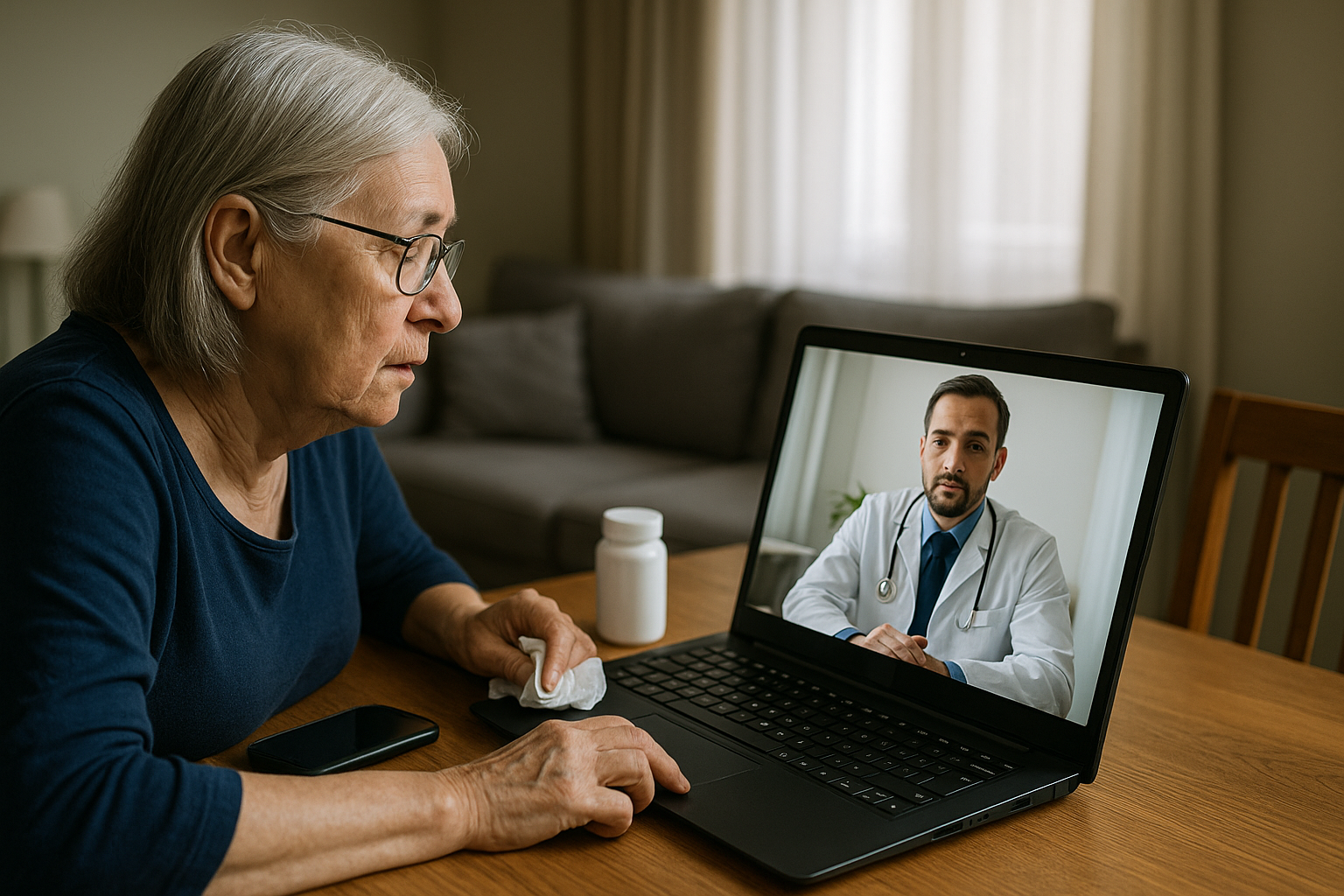COVID-19 accelerated digital health, but not everyone could keep up
The rapid digitization of healthcare services during the COVID-19 pandemic was met with dramatically different responses by providers and users. Healthcare professionals generally regarded digital tools as necessary, functional, and largely effective in sustaining continuity of care during a time of extreme disruption. Their prior familiarity with healthcare IT systems and structured training facilitated smoother adaptation.

The COVID-19 pandemic accelerated the digitalization of healthcare services at an unprecedented pace. While this shift brought efficiency and innovation, it also illuminated a persistent digital divide that threatens to exacerbate health inequities if left unaddressed, reveals a new study published in the peer-reviewed journal Healthcare.
The study, titled "Digital Divide: Contrasting Provider and User Insights on Healthcare Services During the COVID-19 Pandemic," provides rare comparative insights into the digital healthcare experience from both ends of the spectrum.
Based on the survey of 290 healthcare employees and 263 healthcare consumers between December 2024 and May 2025, the study points to a troubling digital divide, not just in infrastructure, but in knowledge, confidence, and willingness to use digital tools, with implications that reach far beyond the pandemic.
How did providers and consumers experience digital healthcare differently?
The rapid digitization of healthcare services during the COVID-19 pandemic was met with dramatically different responses by providers and users. Healthcare professionals generally regarded digital tools as necessary, functional, and largely effective in sustaining continuity of care during a time of extreme disruption. Their prior familiarity with healthcare IT systems and structured training facilitated smoother adaptation.
On the other hand, consumers often encountered barriers rooted in usability challenges, limited access to devices or stable internet, and a lack of guidance on how to use telehealth platforms. The study found that while most healthcare employees adapted swiftly to virtual consultations and digital records, many users felt overwhelmed or disconnected by the impersonal and technical nature of these interactions. A significant portion of consumers reported a decline in satisfaction with care quality, citing an inability to express themselves fully or receive the same level of attention and empathy through screens.
The contrasting experiences were further influenced by individual characteristics. Consumers with higher educational attainment and younger age profiles were more likely to report successful digital health interactions. In contrast, older adults and those from lower socioeconomic backgrounds struggled more with access and navigation.
What are the root causes of the digital divide in health services?
The study identifies a complex set of factors contributing to the divide. Digital literacy emerged as one of the most important determinants. Healthcare workers typically had access to digital training as part of their professional development and were supported by IT infrastructure within their institutions. In contrast, many users entered the pandemic with little or no prior exposure to telemedicine or mobile health tools.
Socioeconomic factors such as income, education level, and employment status played a decisive role in determining access to the necessary technology. The study found that consumers who lacked smartphones, personal computers, or high-speed internet were effectively excluded from digital health services. Moreover, a lack of tailored support to help vulnerable populations adopt new technologies intensified this exclusion.
Even where access was available, psychological and cultural barriers further complicated matters. Consumers often felt alienated by the clinical tone and layout of digital platforms. Older users in particular expressed discomfort with the lack of face-to-face interaction, which they associated with quality care. In many cases, distrust in digital security and concern about privacy also discouraged full participation.
On the institutional side, while providers saw digital tools as convenient and even time-saving, they also faced challenges. Technical issues, uneven integration of systems, and limited support in managing patient expectations contributed to workflow stress. Nonetheless, providers generally perceived digital transformation as a necessary and beneficial evolution of healthcare delivery.
What strategies can bridge the gap and ensure equitable access?
The authors argue that bridging the healthcare digital divide requires a multi-pronged approach that addresses both infrastructural and human factors. They emphasize the need for inclusive policy-making that goes beyond simply offering digital tools to ensuring those tools are usable, accessible, and trusted by all populations.
One recommended strategy involves designing digital platforms with input from both providers and consumers, particularly those with limited digital experience. Human-centered design, incorporating accessibility features such as large-font options, voice-guided instructions, and multilingual interfaces, could go a long way in increasing usability.
Digital literacy training must also be scaled up significantly. Public awareness campaigns, community-based digital health workshops, and personalized onboarding for telehealth services can equip consumers with the skills and confidence needed to participate fully in digital healthcare. Importantly, these initiatives must be culturally sensitive and tailored to the needs of marginalized populations.
From a technological standpoint, expanding broadband access and subsidizing devices for low-income users are essential steps. Partnerships between public health institutions and private telecom companies could facilitate these infrastructural improvements. Furthermore, integrating digital health with traditional, in-person options, rather than replacing them entirely, can provide a balanced, transitional model that respects user preference and capacity.
For healthcare institutions, investing in staff training, ensuring interoperability of digital platforms, and establishing clear guidelines for digital conduct and communication will be critical. These measures can help healthcare professionals better support patients and maintain the human connection essential to high-quality care.
To ensure the digital transformation of healthcare is truly inclusive, policies must confront the social, economic, and educational disparities that define access.
- FIRST PUBLISHED IN:
- Devdiscourse










